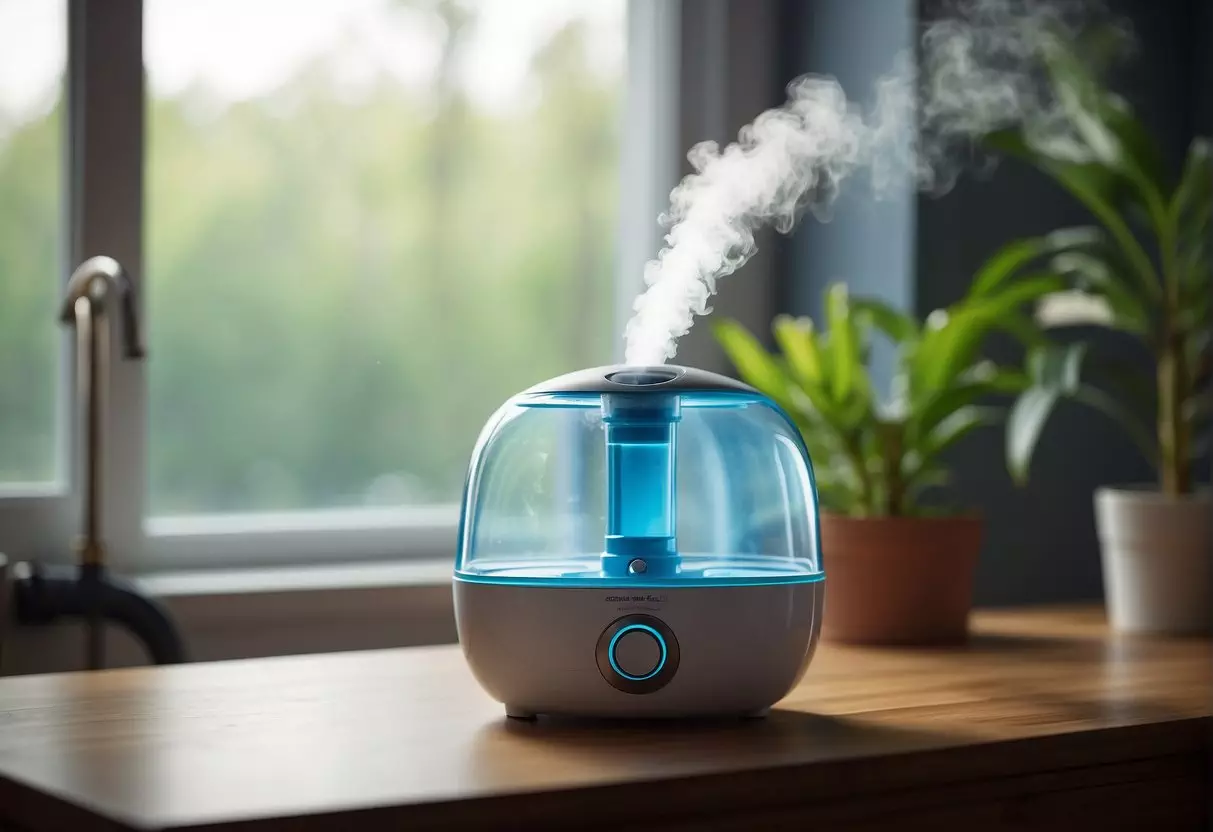Can I Use Tap Water for Baby Humidifier? Understanding the Best Water to Use
When considering the best care for your little one, especially when it comes to creating a comfortable environment, you might ponder whether it’s okay to use tap water in your baby’s humidifier. With safety being paramount for children and babies, it’s essential to understand the water quality requirements for baby humidifiers.

While tap water is convenient, using it directly in a humidifier could introduce minerals and potential contaminants into the air, which might not be safe for your baby’s developing respiratory system. Instead, many experts advocate for the use of filtered or distilled water to ensure any airborne particles are as clean as possible. This helps protect your baby from any impurities that could be found in regular tap water.
Not only does using the right type of water help maintain a healthy environment, but it also extends the lifespan of your humidifier by preventing mineral buildup that can cause mechanical issues. So for the well-being of both your baby and the device, it’s wise to consider the best practice for water use in humidifiers.
Table of Contents
Understanding Humidifiers and Water Types
Selecting the right water to use in your baby’s humidifier is essential to ensure optimal performance and avoid potential health risks. Let’s take a closer look at the options available.
Types of Humidifiers
There are various types of humidifiers, each designed to suit different needs. Cool mist humidifiers are popular for use with babies because they don’t heat water and thus pose less risk of burns. Warm mist humidifiers, also known as vaporizers, boil water to release steam and are effective for reducing germs. Ultrasonic humidifiers use high-frequency vibrations to produce mist and are known for being exceptionally quiet, which is great for not disturbing your baby’s sleep.
Water Quality and Its Effects
The type of water you use in a humidifier impacts its performance and longevity. Using tap water can introduce minerals and impurities which can deposit inside the humidifier, promoting the growth of bacteria and mold. Filtered water has fewer impurities, making it a healthier choice for your air quality. Distilled water or demineralized water is generally the best option, as it has been boiled and rematerialized, removing minerals and contaminants. Although more expensive, bottled water can also be an alternative, but understand that not all bottled water is the same. Some may still contain minerals that can clog your humidifier. If you’re considering boiling tap water, be aware that while boiling can kill bacteria, it doesn’t remove minerals.
For ensuring a healthy environment for your baby, consider these Top Picks for humidifiers that could be paired with high-quality water for top-notch air quality in your nursery.
Health and Safety Considerations

When considering the use of a humidifier for your baby, it’s important to understand the potential risks tied to water quality and the health benefits that proper humidifier use can offer. Your child’s safety and comfort are paramount, and using the right type of water can prevent health issues while ensuring the air your baby breathes is helpful, not harmful.
Potential Risks of Using Tap Water
Tap water often contains minerals that can create deposits inside your humidifier, leading to a breakdown of the mechanism. Moreover, these minerals can promote the growth of mold and bacteria, which could be harmful when dispersed into the air. Even more concerning, tap water might contain low levels of lead; while typically safe to drink due to stomach acid neutralizing the lead, inhaling it through humidifier mist can pose serious health risks. To ensure safety and reduce the possibility of health issues like allergies or respiratory infections, using filtered or distilled water is recommended. Learn more about the risks in this article on safe humidifier vaporizer use for babies.
Health Benefits of Proper Humidifier Use
Maintaining proper moisture levels in your baby’s room keeps their nasal passages moist, which can protect against congestion, cough, and complications from illnesses like the flu and pneumonia. The American Academy of Pediatrics suggests using a cool-mist humidifier to combat dry air that can irritate young lungs and trigger respiratory problems in children. It’s essential, however, to keep humidity levels below 50% to prevent mold growth, ensuring your child reaps the full respiratory benefits without additional risk. The do’s and don’ts of using tap water in your humidifier offer great insights into proper humidifier practices for your child’s health.
Maintenance and Best Practices
Keeping your humidifier in tip-top shape involves regular maintenance and using the appropriate water. Strict adherence to these practices will not only prolong the lifespan of your humidifier but also ensure it provides the most benefit for your baby’s needs.
Cleaning and Upkeep
Your humidifier requires consistent cleaning to prevent the growth of mold and bacteria. It’s recommended that you empty the water tank daily, rinse it with clean water, and allow it to air dry. At least once a week, follow the manufacturer’s instructions to thoroughly clean and disinfect the humidifier. This often involves using a mix of water and vinegar or a disinfectant recommended by the manufacturer. Remember to check and replace filters as advised, because dirty filters can lead to a build-up of unwanted particles released into the air.
Choosing the Right Water
While tap water may seem convenient, it could contain minerals that create deposits in your humidifier and release white dust into the air. Using distilled or demineralized water is a better option as it’s free from most minerals and impurities. If you don’t have access to distilled water, filtered water can be a suitable compromise, but it’s not as effective in reducing mineral buildup. Always ensure that the water you use aligns with the manufacturer’s instructions to avoid damaging your humidifier and to maintain its optimal performance.
